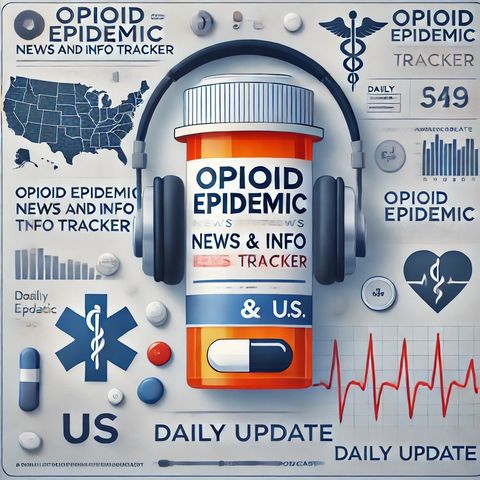"Navigating the Evolving Opioid Crisis: Insights and Solutions"

Download and listen anywhere
Download your favorite episodes and enjoy them, wherever you are! Sign up or log in now to access offline listening.
"Navigating the Evolving Opioid Crisis: Insights and Solutions"
This is an automatically generated transcript. Please note that complete accuracy is not guaranteed.
Description
## The Opioid Epidemic: A Persistent and Evolving Crisis The opioid epidemic continues to be a dire public health issue in the United States and Canada, marked by staggering statistics...
show moreThe opioid epidemic continues to be a dire public health issue in the United States and Canada, marked by staggering statistics and a complex array of challenges.
### Historical Context and Trends
Since the late 1990s, the opioid epidemic has unfolded in three distinct waves. The first wave began with the increased prescribing of opioids in the 1990s, leading to a rise in overdose deaths involving prescription opioids. The second wave, starting around 2010, saw a rapid increase in heroin-related overdose deaths, though these have been declining in recent years. The third and most current wave, beginning in 2013, is characterized by a surge in deaths involving synthetic opioids, particularly illegally made fentanyl and its analogues[2].
### Current Statistics
In the United States, the numbers are alarming. In 2022, nearly 108,000 people died from drug overdoses, with approximately 82,000 of those deaths involving opioids. This represents a tenfold increase since 1999. The rate of overdose deaths involving synthetic opioids other than methadone, primarily fentanyl and its analogues, increased by about 4% from 2021 to 2022, while deaths involving heroin and prescription opioids decreased by 36% and 12%, respectively[2].
In Canada, the situation is equally grave. From January 2016 to March 2024, there were 47,162 reported apparent opioid toxicity deaths, with 84% of these accidental deaths occurring in British Columbia, Alberta, and Ontario. Males and individuals aged 30 to 39 years were disproportionately affected, accounting for 72% and 31% of these deaths, respectively[1].
### Demographic Impact
The opioid epidemic affects various demographics differently. In the U.S., overdose deaths involving opioids and stimulants often occur together; in 2022, nearly 43% of drug overdose deaths involved both substances. In Canada, most opioid-related poisoning hospitalizations and emergency department visits were among males, with those aged 60 years or more and 20 to 49 years being the most affected groups for hospitalizations and emergency visits, respectively[1][2].
### Co-Poisoning and Poly-Substance Use
Co-poisoning with other substances is a significant concern. In Canada, 17% of opioid-related poisoning hospitalizations from January to March 2024 involved co-poisoning
Information
| Author | QP-4 |
| Organization | William Corbin |
| Website | - |
| Tags |
Copyright 2024 - Spreaker Inc. an iHeartMedia Company

Comments